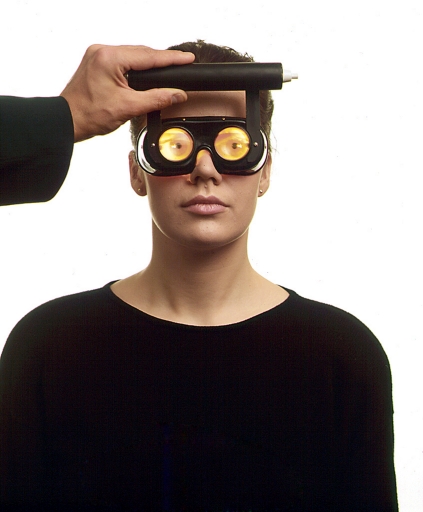Figure 3.
Clinical examination using Frenzel’s spectacles. The lenses, which are illuminated from within and contain enlargement lenses (+16 diopters) prevent gaze fixation, which may suppress peripheral vestibular spontaneous nystagmus, for example. On the other hand, they make it easier to study the patient’s eye movements. When Frenzel’s spectacles are used to examine a patient, attention should be paid to possible spontaneous nystagmus, gaze-evoked nystagmus, head-shaking nystagmus (to this end, the patient should be asked to turn his/her head quickly from right to left and back, about 20 times; subsequently the eye movements should be studied), positional nystagmus and hyperventilation induced nystagmus. Pay attention to positioning nystagmus which indicates a muscle tonus imbalance of the vestibulo-ocular reflex; if this originates from a peripheral vestibular lesion—such as occurs, for example, in vestibular neuritis—then the nystagmus can be typically suppressed by visual fixation. Head-shaking nystagmus indicates a latent asymmetry of the so-called velocity storage; this may be due to peripheral or central vestibular functional disorders.

